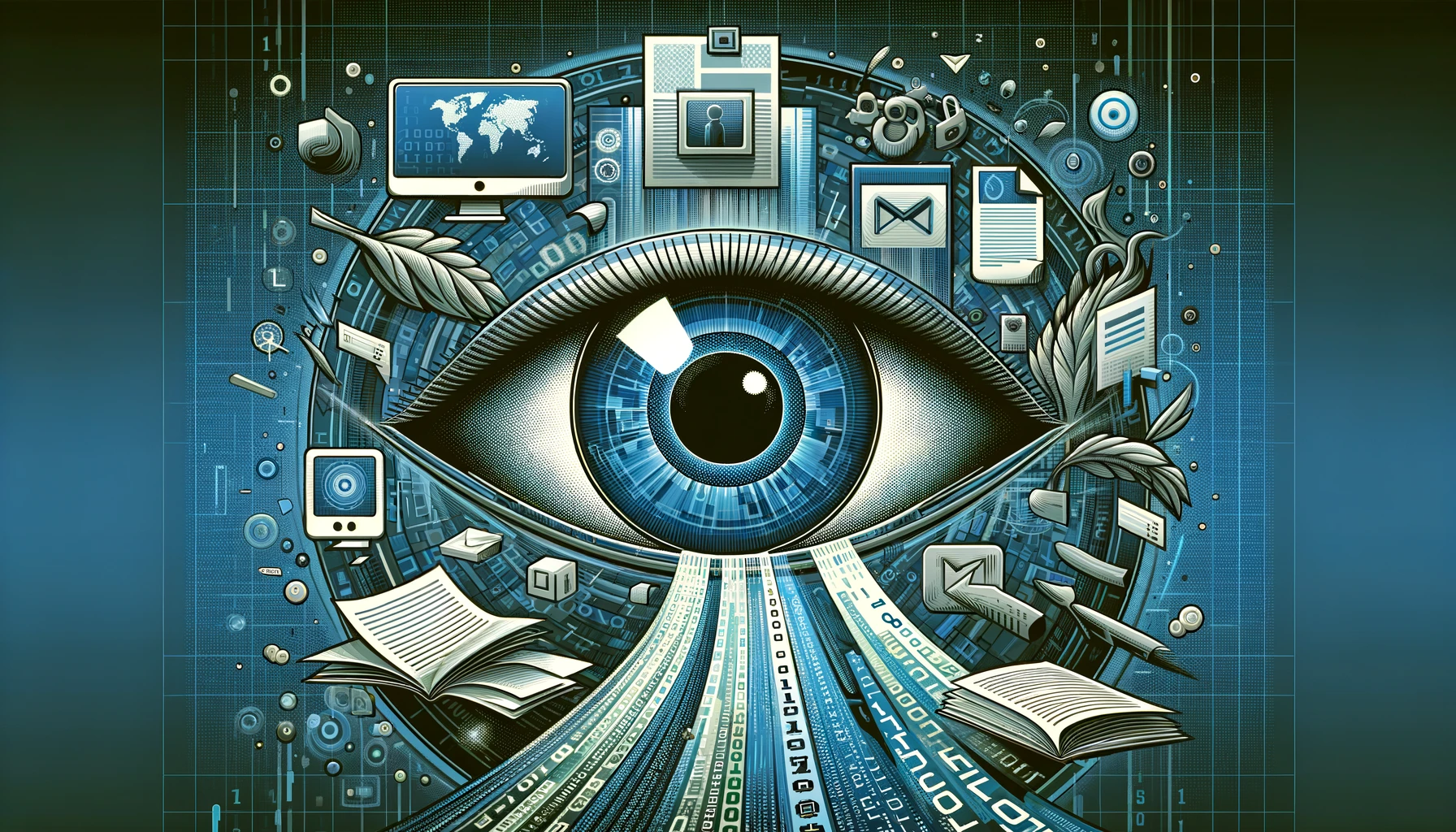Image-to-Text Conversion – The Power Tool of OCR Technology
Optical Character Recognition (OCR) represents a cutting-edge AI technique that transforms visual content into textual format, widely recognized as image to text conversion. This process showcases the extraordinary capabilities of machine learning in decoding visual information, a crucial skill in the OCR field. Through this innovative technology, computers gain the proficiency to identify and comprehend characters in images, seamlessly connecting the world of visual content with that of digital text.
The Bridge Between Images and Text
Machine learning plays a pivotal role in OCR, enabling computers to decipher languages and characters they encounter in images. This capability is critical, as computers inherently process information differently from humans. For example, while we easily interpret letters and words, computers rely on numerical codes to make sense of text. OCR steps in to translate visual information, such as characters in images, into a digital format that computers can understand and process.
The Process of Image-to-Text Conversion
When OCR applications analyze an image file, they employ sophisticated algorithms to instantly convert the visual data into a textual format. This transformation facilitates the extraction and editing of text from images or scanned documents, making information more accessible and versatile. For instance, an OCR tool can quickly convert a photographed document into an editable text file, simplifying the process of modifying or extracting specific information.
Exploring the Capabilities of Image-to-Text Applications
OCR applications are not limited to specific file types. They can handle a wide range of formats, including Microsoft Office documents. These applications support numerous languages, such as Spanish, Korean, and Mandarin, making them versatile tools for global use. The integration of OCR technology with other software platforms enables the conversion of images into comprehensible text, enhancing the usability of digital content.
The Role of OCR Apps in Digital Transformation
Optical Character Recognition apps revolutionize how we interact with digital images. They enable the extraction of text from image files, eliminating the need for manual transcription. Imagine the convenience of automatically recognizing and extracting text from a document or image file. OCR technology supports various file formats, including PDFs, JPEGs, PNGs, and HEVC files, improving the quality and accessibility of information sourced from these documents.
The Impact of OCR on Business Efficiency
OCR technology significantly enhances business efficiency by automating tasks and improving data processing speed. This automation extends to various applications, including improved facial recognition technologies. By employing OCR apps, companies can train their workforce in facial identification without relying heavily on manual effort. This technology also accelerates task automation, contributing to increased productivity and enhanced customer service. In legal scenarios, OCR proves invaluable in verifying the accuracy of scanned documents, ensuring their authenticity and error-free status.
Highlighting Top OCR Applications
- Tesseract by Google: An open-source OCR system capable of extracting text from images in multiple languages.
- Adobe Acrobat: A popular tool for creating and editing PDFs, with OCR capabilities to convert images into editable text.
- ABBYY FineReader: A premium application for converting text from images into editable formats, supporting various languages and font sizes.
- CopyFish: A browser extension that quickly identifies and converts text within images into editable formats.
- Online OCR Tools: Services like onlineocr.net facilitate the conversion of images to text. Notably, Online OCR is an excellent online service that offers easy and efficient image-to-text conversion.
Diverse Applications of Image-to-Text Technology
Image-to-text technology has broadened the scope of digital content usage, thanks to advancements in OCR. This technology is instrumental in various sectors, offering numerous benefits:
- Enhancing Accessibility: Converts text in images to formats readable by screen readers, aiding visually impaired users.
- Streamlining Data Entry: Reduces manual data entry by extracting text from scanned documents and images.
- Facilitating Translation Services: Extracts text from images for easier language translation, aiding in global communication.
- Preserving Historical Records: Converts text in images to digital formats, ensuring the longevity and accessibility of historical documents.
- Enabling Text Analytics: Allows for the extraction of data from images for comprehensive text analysis.
- Improving E-Learning Tools: Transforms educational materials into formats compatible with e-learning platforms.
- Accelerating Legal Processes: Converts scanned legal documents into searchable and editable text, streamlining legal workflows.
- Simplifying Invoice Processing: Extracts critical information from scanned invoices for more efficient processing.
- Enhancing Content Management: Helps in extracting and organizing text embedded in images for better content management.
- Powering Mobile Applications: Integral to apps that require image-to-text conversion for various functionalities.
Conclusion
The potential of image-to-text technology extends far beyond conventional applications, playing a transformative role in various sectors. Its integration of visual and textual data not only facilitates information accessibility but also drives innovation and empowerment across multiple domains. As this technology continues to evolve, it promises to reshape the digital landscape, enhancing digitization, automation, and information accessibility.

